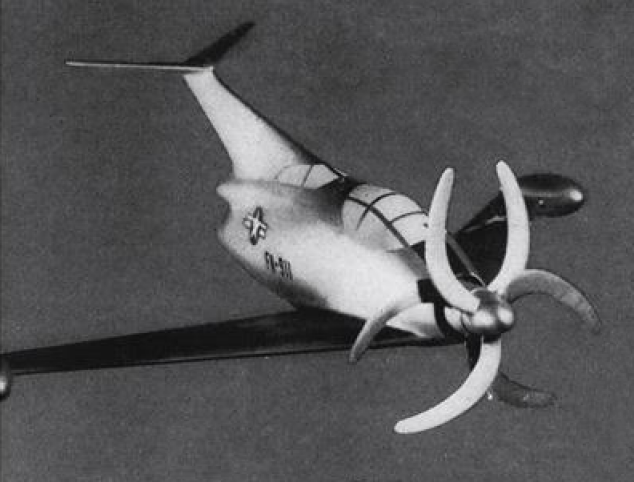DEVELOPMENT PLANNING
Development planning evolved from several different disciplines over many decades. The foremost and central discipline was aircraft design. Its origins were in the Plane Design Office of the Signal Corp's Aviation Section, Washington, D.C. The office and its technical staff transferred to McCook in 1917 and became the core around which other technical sections and laboratories of the Aircraft Engineering Division were organized. During World War I and the early 1920s, McCook's engineers designed and built their own prototype airplanes in addition to testing and evaluating industry models. McCook's premier airplane design engineer at that time was Alfred Verville. Another veteran design engineer, Jean Roché, led the design group well into the1930s. McCook's design engineers discontinued the practice of designing prototype aircraft for in-house fabrication, test, and evaluation in the early 1920s. This was done by order of Air Service Chief Major General Mason Patrick, due to industry complaints of unfair competition by McCook's aircraft design "brain trust" and fears that the Army intended to establish McCook along lines of an arsenal that would design and manufacture its own operational aircraft. The Engineering Division continued, however, to develop designs for airplane structures like airfoils and small test specimens, such as gliders used in conducting experimental research. Most importantly for the later development planning function, however, the division's engineers continued the practice of drafting preliminary designs for all new aircraft to be developed and acquired by the Army. These preliminary designs incorporated Air Corps operational requirements and served as the basis for more detailed performance specifications issued to industry. The aircraft design group was part of McCook's Airplane Section, which became Wright Field's Aircraft Laboratory in 1939. There it remained until 1959, when the Wright Field laboratories were completely reorganized. Development of more complex and expensive airplanes, beginning in the later 1930s and through World War II , led in the 1950s to the emergence of the second component of development planning: systems cost analysis. The foremost advocate of the need for performing cost analysis was Fred D. Orazio, the principal design engineer in the Aircraft Laboratory's Design Branch. In the 1950s, Orazio formed a group on the WADC staff that began to integrate weapon systems cost analysis with other aspects of WADC's planning functions. The reorganization of the Wright Field laboratories in the late 1950s and early 1960s resulted in placing cost analysis and weapon system design within the new systems engineering organization at Wright Field. There, as a result of a number of internal reorganizations in the course of the 1960s, they were more completely integrated with one another, first under the Directorate of Systems Engineering of the Wright Air Development Division (WADD) and, after 1961, in the Deputy for Systems Engineering of the Aeronautical Systems Division (ASD) . In 1963 ,the engineering function was realigned under a new Research and Technology Division (RTD) as the Systems Engineering Group (SEG). The beginnings of computerization in the 1960s allowed many more possibilities in vehicle design and analysis to be investigated, and in greater detail, than were previously possible . Planning by mission area was also instituted around this time and several significant "mission analyses" were accomplished to determine the most cost-effective system solutions to existing needs. In 1967 , RTD was abolished and the SEG once more became part of ASD as the division's Deputy for Engineering(ASD/EN) . In August 1967, the Deputy for Development Planning (ASB) was officially formed by combining the SEG's Directorate of Studies and Analyses (SES) with ASD's Deputy for Advanced Systems Planning. Within a year, the new organization became known as the Deputy for Development Planning with the symbol XR. Development Planning would remain a central part of ASD's weapon systems planning and development for the next three decades.
 IMG_2286_3.jpg42.7 KB · Views: 277
IMG_2286_3.jpg42.7 KB · Views: 277 IMG_2284.jpg289.9 KB · Views: 53
IMG_2284.jpg289.9 KB · Views: 53 IMG_2285.jpg163 KB · Views: 57
IMG_2285.jpg163 KB · Views: 57 IMG_2292.jpg194.9 KB · Views: 60
IMG_2292.jpg194.9 KB · Views: 60 IMG_2296.jpg227 KB · Views: 180
IMG_2296.jpg227 KB · Views: 180 IMG_2291.jpg194.1 KB · Views: 58
IMG_2291.jpg194.1 KB · Views: 58 IMG_2293.jpg387.7 KB · Views: 231
IMG_2293.jpg387.7 KB · Views: 231 IMG_2294.jpg230.4 KB · Views: 249
IMG_2294.jpg230.4 KB · Views: 249 IMG_2288.jpg217.7 KB · Views: 272
IMG_2288.jpg217.7 KB · Views: 272 IMG_2298.jpg54 KB · Views: 274
IMG_2298.jpg54 KB · Views: 274







